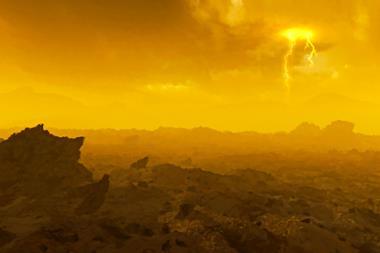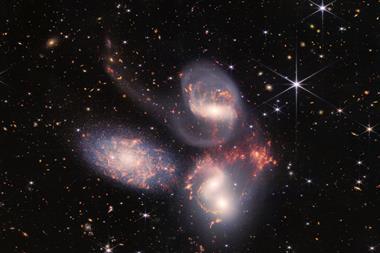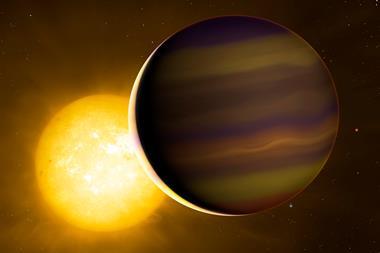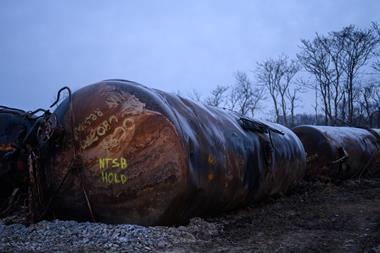On 11 September, a study reported observations of the exoplanet K2-18 b by the James Webb Space Telescope (JWST), the most powerful space telescope ever built. The exoplanet’s spectrum revealed the presence of methane and carbon dioxide, but no ammonia, supporting the hypothesis that there may be a water ocean underneath the hydrogen rich atmosphere of K2-18 b.
However, the finding that created the biggest stir, particularly in the media, was that the exoplanet’s spectrum hinted at the presence of dimethyl sulfide (DMS), a molecule which, on Earth, is only produced by life.
But is it too early to get excited and what further information is required to confirm if there really is life on the exoplanet?
What is K2-18 b?
K2-18 b is an exoplanet, 2.6 times the radius of Earth, orbiting the cool dwarf star K2-18 in the habitable zone, a region around a star where water can exist in its liquid state on a planet’s surface. It lies 120 light years from Earth in the constellation Leo.
Exoplanets like K2-18 b – also known as a ‘sub-Neptune’ because it sits between the Earth and Neptune in size – are unlike anything else that exists in our solar system and are challenging to explore because they are often outshone by the glare of their much larger parent stars.
‘It’s a very special kind of planet because it’s something that we don’t have in the solar system,’ explains Joanna Barstow, a planetary scientist specialising in the study of exoplanet atmospheres. ‘What’s being proposed for this planet is that it might be an “intermediate case” planet that has a bit of hydrogen and helium, but also quite a lot of water – a Hycean world.’
Barstow explains that K2-18 b is the only planet of its type in terms of its temperature and the composition of its atmosphere. ‘It’s sort of a miniature Neptune. We know there’s a lot of hydrogen and helium but we don’t really know what the interior is. We still have a lot to learn about how the chemistry works on planets like this and even with the best will in the world, and the best models, we’re certainly not capturing every process that could possibly go on.’
What exactly did the researchers find?
According to the researchers, the spectrum revealed methane and carbon dioxide at 5σ and 3σ confidence, respectively (the higher the sigma value the less likely the discovery is to be down to a mistake or random chance. In most cases 5σ is considered the gold standard for significance ).
Methane has proved to be quite elusive in planetary atmospheres, explains Barstow, saying that it was ‘definitely satisfying’ to have confirmation of the presence of methane in the atmosphere of K2-18 b. ‘They’re nice confident detections, I can certainly be convinced that it’s there,’ she adds.
As well as finding methane and carbon dioxide they didn’t detect ammonia, all of which is consistent with expectations for a Hycean world.
In addition, they found ‘potential signs’ of DMS, and although the evidence, at around 1σ confidence, was not nearly as high as that for methane and carbon dioxide, the discovery created quite the stir.
Why would the discovery of dimethyl sulfide on an exoplanet be so exciting?
This is the first time that astronomers have picked up a whiff of DMS in a planet orbiting a distant star. According to the researchers, this possible detection is significant because it supports the hypothesis that K2-18 b is a Hycean world and that there might be life there. On Earth, DMS is a byproduct of living organisms, with the bulk produce by phytoplankton.
But – and this is a big but – within the scientific community there is a healthy amount of scepticism about the finding because of the low certainty of the detection.
‘It is a very tentative detection,’ says Barstow. ‘It’s really difficult to talk about things like this in the media environment because obviously we get excited if we see something new and interesting in a planet like this, particularly if it’s a molecule that could possibly be associated with life. [But] you’ve got to be so cautious about how you interpret this, because…claiming that it has to be of biological origin is a really big claim. There’s usually something else you can conceive of, if you think hard enough, that could make be making [the DMS].’
‘Everyone, including the authors of this paper, would be very hesitant to mention aliens or life at this point.’
Karin Öberg, an astrochemist at Harvard University, says that the potential inference of DMS is not the same as it being detected. ‘The authors claim that “the spectrum also suggests potential signs of dimethyl sulfide”,’ she says. ‘This means that they included DMS in their atmospheric model and did not find *significant* evidence for it.’
This isn’t the first time that excitement has been whipped up prematurely about possible evidence of life on another planet. In September 2020, detection of phosphine – another proxy for the presence of life – in the upper atmosphere of Venus caused a similar stir.
However, many scientists were sceptical, with some finding no robust statistical evidence for phosphine in Venus’s atmosphere and the overriding opinion was that it was too soon to tell if there was phosphine on Venus or not.
How was the discovery made?
The researchers made their observations using the James Webb Space Telescope (JWST), a large infrared telescope launched in 2021. The JWST has four instruments that have detectors able to detect extremely faint infrared radiation across a wide range of wavelengths. This study was examining wavelengths over the 0.9–5.2µm range.
When an object like a planet is illuminated by a star it absorbs some of this light and emits other portions of it depending on its composition. Analysing the spectrum of light emitted by a planet can reveal information about its physical properties, including temperature, mass and chemical composition. The atoms and molecules present in abundance in the atmosphere of the planet produce a unique ‘chemical fingerprint’ in the spectrum that can be used to tell which chemical species are present and can reveal a wealth of information about physical conditions too.

Barstow explains that most of the planets that scientists know about in any detail are very close to their parent star and, as a result, there is a reasonable likelihood that at some point in their orbit they will pass between their parent star and Earth.
‘When that happens, some of the light from the star passes through the planet’s atmosphere,’ she says. ‘[To] get an insight into the [composition of] the atmosphere we’re measuring a very small difference in the starlight from when the planet is in front of the star compared with what we see when the planet is not in front of the star…and we’re also then measuring the variation in that dip [in brightness] as a function of wavelength.’
How will scientists confirm whether dimethyl sulfide is present or not?
The next steps in the investigation of K2-18 b will require more theoretical investigations to understand the atmospheric processes at play, and more observations.
According to the scientists, upcoming JWST observations should be able to confirm if DMS is present in the atmosphere of K2-18 b at significant levels.
However, as Öberg states, even if DMS was confirmed, this is not evidence for life. ‘There are possible abiotic formation pathways for DMS in this kind of planet,’ she adds.
The researchers say that if abundant DMS is confirmed on K2-18 b by future observations, that result would either mean a lot of life in the oceans or that new theory is needed to explain abiotic production of the chemical on these kinds of planets.
So, for now, we should contain our excitement that there might be life out there. ‘We can’t jump to the conclusion that it’s life every time we find something that we don’t expect,’ Barstow notes.




















No comments yet